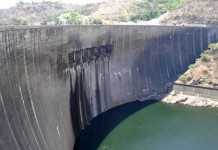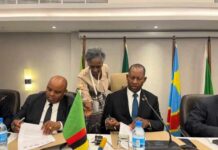ZAMBIA has dropped to number nine on the world’s top 10 cobalt-producing countries list.
The Democratic Republic of Congo (DRC) has maintained its almost impregnable position at number one, while Zambia – which was once number two up to 2006 – has been overtaken by producers in Asia, the Americas and North Africa.
In its 2012 figures released this year, the United States Geological Survey, an authority on earth and life science data, places Zambia at number nine in the world with cobalt production of about 3,000 metric tonnes a year, according to an article published by Investing News on Tuesday.
Despite the drop in ranking, Zambia’s extensive copper mining industry makes it a robust cobalt producer whose 270,000 tonnes reserves make her number three in the world after the DRC and Australia.
Although cobalt exists in trace amounts in the earth’s crust, it is not mined directly from there.
The mineral is produced from cobalt-yielding ores such as cobaltite, erythite, glaucodot and skutterudite or, more commonly, by reducing cobalt compounds that occur as by-products of nickel or copper mining.
For that reason, countries like Zambia with large deposits of nickel and copper are often significant producers of cobalt as well.
With mine production of 60,000 metric tonnes of cobalt, the DRC produces over two-thirds of the world’s supply with untapped reserves standing at 3.4 million metric tonnes.
Other countries on the cobalt producers’ top list include China at number two with mine production of 7,000 metric tonnes and reserves of 80,000 metric tonnes.
Number three is Canada with production of 6,700 tonnes and 140,000 tonnes of reserves, while Russia with mine output of 6,200 tonnes and 250,000 tonnes of reserves is occupying position four.
The world’s second largest cobalt reserves of 1.2 million tonnes are found in Australia which has been placed at number five with mine production of 4,500 tonnes.
Number six position is occupied by Brazil and Cuba which each produce 3,700 tonnes with their national reserves standing at 89,000 tonnes and 500,000 tonnes, respectively.
At number eight, New Caledonia produces 3,500 tonnes while reserves are at 370,000 tonnes. Morocco occupies the 10th slot with mine output of 1,800 tonnes and reserves of 20,000 tonnes.
Zambia loses grip on cobalt
Daily Mail

 JOIN DRIVERN TAXI AS PARTNER DRIVER TODAY!
JOIN DRIVERN TAXI AS PARTNER DRIVER TODAY!












Note the situation at kasumbalesa border is bad.zambian trucks in the DRC have been damaged and drivers lives are in danger.